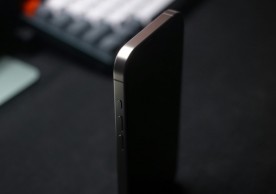The Samsung Galaxy S4 is finally out as the company's flagship smartphone for 2013, and it bears a striking resemblance to its Galaxy S3 predecessor.
Though the two handsets may look alike, however, some notable differences between the Samsung Galaxy S3 and the new Galaxy S4 mark the new-generation Galaxy flagship. On the other hand, are these differences exciting enough to be worth the upgrade?
Display
The Samsung Galaxy S3 sports a 4.8-inch Super AMOLED display with a resolution of 1280 x 720 pixels, also known as 720p or HD, with a decent pixel density of 306 pixels per inch (ppi). Samsung used a PenTile sub-pixel arrangement in the S3, which became infamous for the fuzz it creates around certain graphic elements such as text. Long story short, the Galaxy S3's display was not exactly the handset's strongest spot when compared to other Android powerhouses.
The Samsung Galaxy S4, meanwhile, sports a 4.99-inch Super AMOLED display with a resolution of 1920 x 1080 pixels. In fact, the new flagship features the only Full HD AMOLED display currently available on the market. The pixel density on this display rests at a whopping 441 ppi, rendering very crisp images. It remains unclear for now, however, whether Samsung managed to overcome the issues typically associated with AMOLED panels, such as oversaturated colors leading to inaccurate color reproduction. Otherwise, the brightness and contrast levels appear to fall in line with the Galaxy S3's. All in all, the full HD display on the new Samsung Galaxy S4 is definitely superior to the Galaxy S3's panel.
Design
As previously mentioned, the two handsets bear a striking resemblance to each other, so striking that consumers might mistake one for the other. At a closer look, however, a few differences tell them apart. The Galaxy S4 is the same height as the Galaxy S3, but it is slightly narrower and thinner.
Looking at the front of the device, the most significant difference on the Samsung Galaxy S4 is its narrow bezel. Otherwise, the design is roughly the same as the one found in the Galaxy S3 and the Galaxy Note 2. The Galaxy S4 wears the same plastic case in the same glaze as the Galaxy S3, but comes in different color schemes. In terms of weight, the Galaxy S3 weighs 133 grams (4.69 oz) while the Galaxy S4 is slightly lighter at 130 grams (4.59 oz). In other words, Samsung managed to cram a bigger display in a smaller package. In conclusion, Samsung used the same design and materials for both the Galaxy S3 and the S4, but the latter is slightly more compact.
Under the Hood - CPU, GPU, RAM
As expected, the most notable differences are in the hardware department. The Samsung Galaxy S3 came in two versions. The LTE version packed a Qualcomm Snapdragon S4 SoC with a 1.5GHz dual-core Krait CPU, Adreno 220 GPU and 2GB of RAM. The 3G version used the Samsung Exynos 4 Quad SoC with 1.4GHz quad-core A9 CPU, Mali 400MP and 1GB of RAM.
The Samsung Galaxy S4 comes in two versions as well. The North American version packs a Snapdragon 600 SoC with a 1.9GHz quad-core Krait CPU, Adreno 320 GPU and 2GB of RAM. The international version, meanwhile, will pack Samsung's new Exynos 5 Octa, i.e. a 1.6GHz quad-core A15 CPU and a 1.2GHz quad-core A7 CPU combined in the big.Little configuration, a PowerVR GPU and 2GB of RAM.
The Snapdragon 600 proved to be extremely fast, but the Exynos 5 Octa still has to undergo some benchmarks to prove its worth. Either version, however, will deliver an obvious improvement over the Galaxy S3's performance. In this department, the Samsung Galaxy S4 sports clear improvements.
Storage
Just as the Galaxy S3, the new Samsung flagship smartphone supports additional memory of up to 64GB via an SD card. Both the Galaxy S3 and the Galaxy S4 come in 16GB, 32GB or 64GB configurations. In conclusion, there's no difference in this department.
Cameras
The Samsung Galaxy S3 packs an 8-megapixel rear camera and a 1.9-megapixel front shooter. The Galaxy S4, meanwhile, goes up to 13 megapixels for the rear-facing camera and 2 megapixels for the front shooter. Samsung also added new functionality to the Galaxy S4's camera software, including a dual recording mode and the ability to record a sound snippet and attach it to an image.
Battery
The Samsung Galaxy S3 packs a 2,100mAh removable battery, generally providing a decent battery performance. The Galaxy S4, meanwhile, packs a more powerful 2,600mAh battery, but the bigger, crisper display will definitely drain more power. It's too early to tell at this point whether the big.Little architecture on the Galaxy S4 will lead to increased power consumption.
Conclusion
The Samsung Galaxy S4 obviously sports some notable improvements over its predecessor, and it's only natural that it does. When it comes to upgrading from the Galaxy S3 to the Galaxy S4, however, only those with an overwhelming desire for the latest gadget with cutting-edge specs should rush to upgrade to the new flagship. The Galaxy S4 is definitely sharper and faster, but the question is: do you really need it?
© Copyright 2020 Mobile & Apps, All rights reserved. Do not reproduce without permission.most read
related stories
more stories from Mobile
-
T-Mobile Introduces New 5G Internet Plans for Enhanced Home and Travel Connectivity
T-Mobile unveils new 5G internet plans, promising enhanced home and travel connectivity for customers seeking high-speed internet on the go.
ernest hamilton -
Huawei Aims for Global Expansion of HarmonyOS, Rivaling Android and iOS
Huawei sets sights on global expansion with HarmonyOS, aiming to rival Android and iOS in the competitive mobile operating system market.
ernest hamilton -
Apple Releases Third Betas for iOS 17.5 and iPadOS 17.5, Introducing App Ecosystem Changes and New Features
Stay ahead with the latest updates! Apple rolls out third betas for iOS 17.5 and iPadOS 17.5, bringing exciting app ecosystem changes and new features.
ernest hamilton -
The MIAD 01: Audiophile Brand Moondrop Teases Its First Smartphone
Moondrop, known for audiophile gear, teases its inaugural smartphone, the MIAD 01, promising a unique blend of audio excellence and mobile technology.
ernest hamilton -
Android 15 Could Simplify Notification Channels, Hide Unused Ones
Android 15 aims to streamline notification channels by hiding unused ones, enhancing user experience and decluttering notification settings.
ernest hamilton -
DolphiniOS Reveals Why GameCube and Wii Emulator Won't Be Available in App Store
DolphiniOS developers shed light on why the GameCube and Wii emulator won't be available in the App Store.
ernest hamilton -
Free Screen Replacement Offered to Galaxy S21 and S22 Owners in India Facing Green Line Issue
Get your screen fixed! Galaxy S21 and S22 owners in India facing the green line issue can now enjoy free screen replacements. Don't miss out on this offer!
ernest hamilton -
Second April Update for Pixel Phones Addresses Widespread Network Issue
Stay updated! The second April update for Pixel phones resolves a widespread network issue. Read more to ensure your device stays connected.
ernest hamilton

















